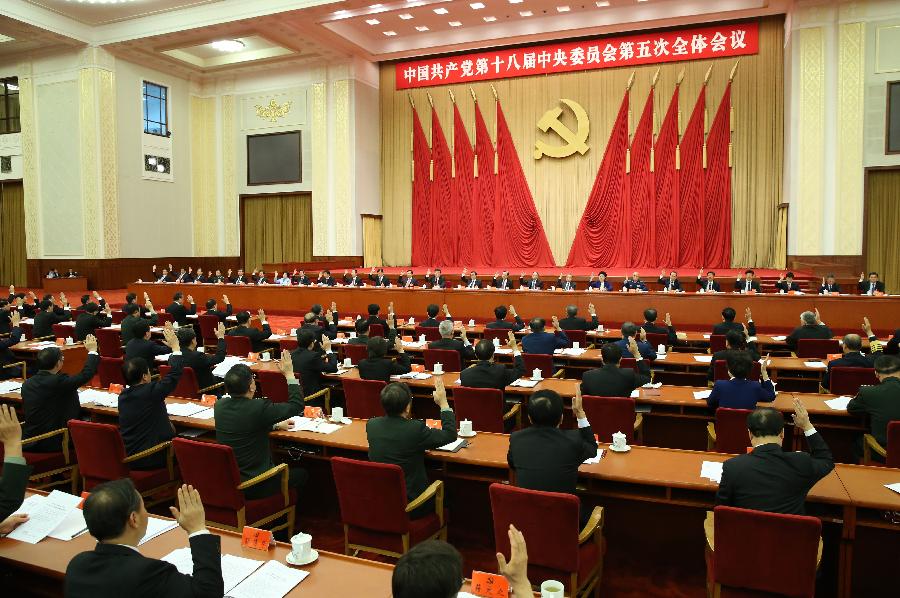China outlined its development for the next five years -- in the communique from the fifth plenum of CPC Central Committee. The details are not yet available, but some policies are consistent with previous ones, and from the broader goals, China's annual growth target can be deducted. Ming Tian has more.

The Fifth Plenary Session of the 18th Communist Party of China (CPC) Central Committee is held in Beijing, capital of China, from Oct. 26 to 29, 2015. (Xinhua/Huang Jingwen)
The new development blueprint made it clear that China would become a Xiao Kang society, or relatively wealthy by 2020. this means both the country's total output and per capita income would be doubled from the 2010 level. And China needs to keep an average growth rate of 6.5 percent over the next five years.
The government plans to have a more sustainable growth model, with less investment but more innovation and consumption. It will focus on integrating the Internet with the traditional industry to drive growth. The sharing economy and big data are also set to gain. China would keep upgrading its manufacturing sector and modernize its services sectors. And the government would have less intervention in price formation, deregulating pricing products and services in competitive sectors.
Chinese people are to have more balanced growth between cities and countryside. Urbanization, modern agriculture, which have become policy favors for less developed areas, would continue to gain traction in years to come. Balance is also expected in the speed of development and environmental protection. Green energy and other healthy ways of consumption would have impetus to grow.
China would also make it easier for foreign investment into the country, dropping more prerequisites and approval procedures. Also, China would be more involved in the global economy, cooperating with its global partners under various trade and investment frameworks, including the Belt and Road Initiative.
Other areas include the healthcare sector, due to the growing number of ageing population. Analysts believe the market would reach eight trillion yuan by 2020. Baby related economies, such as diary and diapers also have great investment potential, as the country abandoned the decades-long one-child policy.







